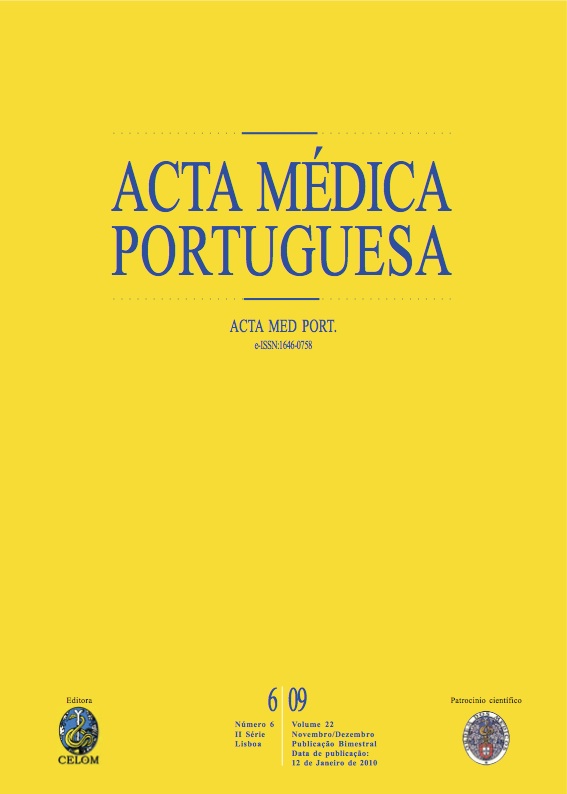The Neuropad test in the screening of peripheral neuropathy in diabetic patients.
DOI:
https://doi.org/10.20344/amp.1740Abstract
One of the first signs of peripheral neuropathy is the loss of perspiration of the feet. Untill now, the Semmes-Weinstein monofilament test has been considered the gold test to detect early peripheral neuropathy. Recently, the Neuropad test has become available: it is a cobalt salt plaster designed to change colour from blue to pink in contact with liquids, namely sweating. The objective of this study was to find if the Neuropad test could be considered as a test for detecting peripheral autonomic neuropathy and to compare its sensitivity and specificity to the Semmes-Weinstein monofilament test. Forty diabetic patients were studied, 22 of them presented with peripheral neuropathy. The criteria used for the definition of neuropathy was based on the Neuropathy Disability Score (NDS). Under Semmes-Weinstein monofilament test, we found a sensitivity and specificity of 82% and 94%, respectively, and with the Neuropad test, a specificity of 44%, but a sensitivity of 100%. Ten patients presented a sudomotor dysfunction of the feet in the absence of peripheral neuropathy (based on the NDS criteria), and were considered as false positives. We concluded that the Neuropad test is a simple, sensitive test to screen for diabetic neuropathy. Based on the false positive results, we may consider it as a reliable test detecting neuropathy in a earlier phase.Downloads
Downloads
How to Cite
Issue
Section
License
All the articles published in the AMP are open access and comply with the requirements of funding agencies or academic institutions. The AMP is governed by the terms of the Creative Commons ‘Attribution – Non-Commercial Use - (CC-BY-NC)’ license, regarding the use by third parties.
It is the author’s responsibility to obtain approval for the reproduction of figures, tables, etc. from other publications.
Upon acceptance of an article for publication, the authors will be asked to complete the ICMJE “Copyright Liability and Copyright Sharing Statement “(http://www.actamedicaportuguesa.com/info/AMP-NormasPublicacao.pdf) and the “Declaration of Potential Conflicts of Interest” (http:// www.icmje.org/conflicts-of-interest). An e-mail will be sent to the corresponding author to acknowledge receipt of the manuscript.
After publication, the authors are authorised to make their articles available in repositories of their institutions of origin, as long as they always mention where they were published and according to the Creative Commons license.









